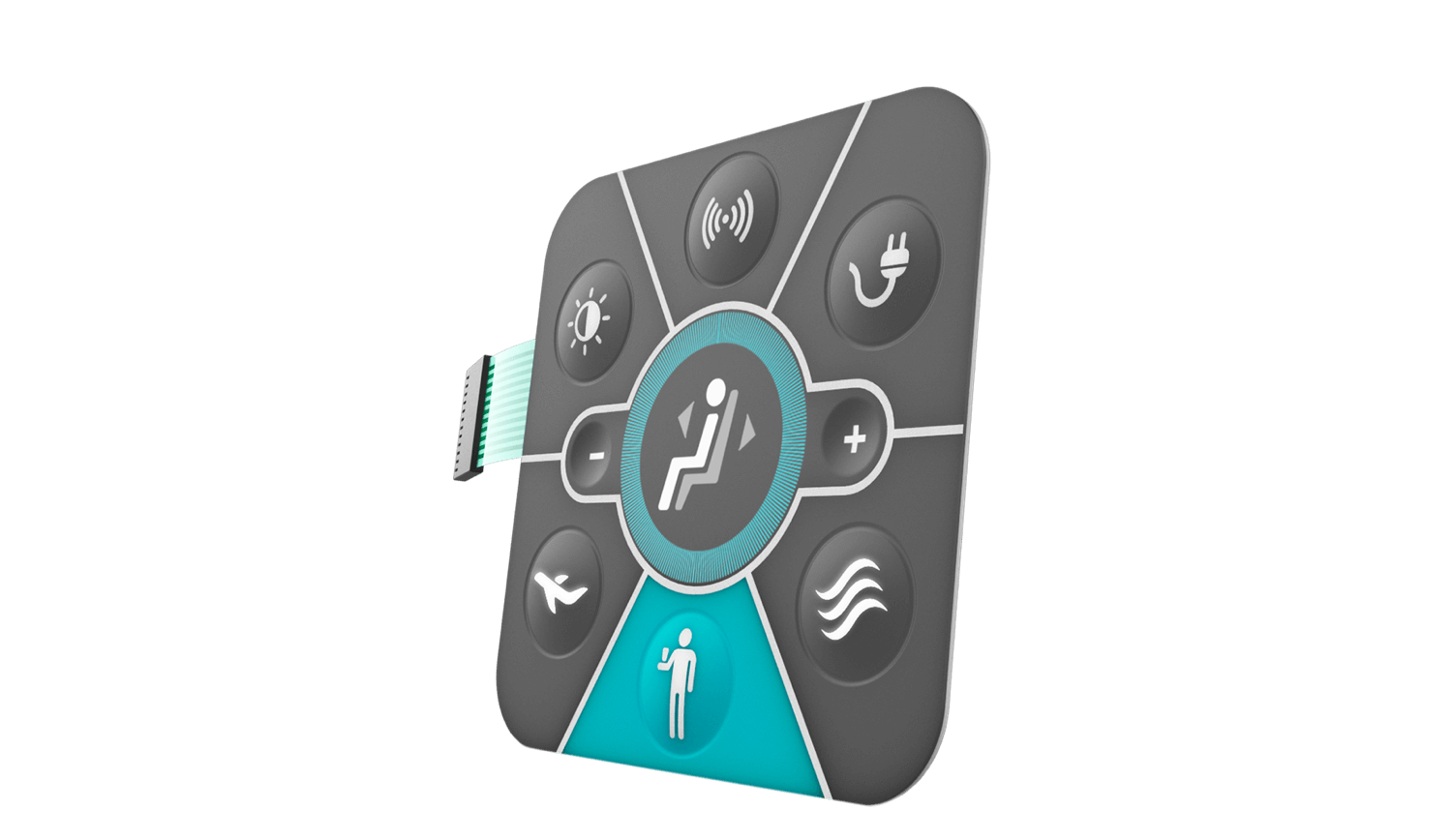Just How a Membrane Switch Improves Individual Experience and Gadget Efficiency
Just How a Membrane Switch Improves Individual Experience and Gadget Efficiency
Blog Article
Comprehending the Performance of Membrane Switches Over for Interface Instruments
The functionality of membrane switches over stands for a substantial innovation in individual interface design, incorporating effectiveness with aesthetic flexibility. As sectors increasingly prioritize user experience, recognizing the subtleties of membrane button innovation ends up being essential.
What Are Membrane Layer Buttons?
Membrane layer switches are cutting-edge user interface tools that assist in customer communication with digital tools. These versatile components consist of multiple layers, consisting of a visuals overlay, spacer, and a printed circuit layer. The style enables a smooth combination right into different digital gadgets, improving both the visual and useful elements of customer interfaces.
Membrane buttons are generally utilized in a vast array of applications, from household appliances to commercial machinery and clinical gadgets. Their building normally features a slim account, making them an excellent selection for compact layouts. The responsive comments supplied by these buttons can be crafted to meet certain user choices, making certain reliable communication in between the user and the tool.
Sturdiness is an additional considerable advantage of membrane buttons, as they are resistant to dirt, wetness, and chemicals, which improves their life-span popular settings. In addition, these switches can be customized in terms of form, size, and graphic design, permitting branding and user-specific features. In general, membrane switches over represent a sensible option for improving user experience in digital gadgets, incorporating capability with aesthetic allure in a reliable way.
Exactly How Membrane Layer Switches Over Work
Operating on a simple principle, membrane switches make use of a split building and construction to sign up user input effectively. Each switch contains several layers, consisting of a published circuit layer, a spacer layer, and a leading graphic layer, which are made to interact perfectly. When a user presses the top layer, it presses the spacer layer, bringing the conductive elements of the circuit layer into call with each other.
This call produces a closed circuit, signaling the device to carry out a details function. The layout permits for different setups, including tactile responses, which can enhance the individual experience by offering a physical sensation upon activation. The products made use of in membrane layer switches usually consist of versatile substratums, such as polyester or polycarbonate, which guarantee durability and durability against damage.

Key Advantages of Membrane Layer Switches

An additional significant advantage is their compactness. Membrane layer buttons are slim and lightweight, which allows manufacturers to conserve area in their gadgets without compromising functionality. This attribute is particularly helpful in applications where weight and volume are crucial factors to consider.
Additionally, membrane buttons are immune to dust, moisture, and chemicals, boosting their longevity. This strength extends their lifespan and lowers the need for regular replacements, causing cost financial savings with time.
Furthermore, the tactile responses provided by membrane layer switches can be maximized to improve individual interaction. They can consist of functions such as raised switches or audible clicks, boosting usability and individual experience.
Applications Throughout Industries
Customer interface devices using membrane layer switches prevail in a wide selection of sectors, showcasing their adaptability and functionality. Membrane Switch. In the clinical industry, membrane switches are indispensable to gadgets such as analysis tools and person surveillance systems, where their durability and convenience of cleansing are crucial for preserving hygiene requirements. Likewise, in the automobile sector, these switches are used in dashboard controls and infotainment systems, supplying a streamlined and modern user interface for individuals.
Furthermore, the consumer electronics field take advantage of membrane layer switches in devices and portable tools, where compact style and easy to use interfaces enhance user experience. Industrial applications additionally leverage membrane layer changes for control board in see it here machinery and automation systems, highlighting their effectiveness and resistance to harsh settings.
In the aerospace and protection sectors, membrane buttons are used in cabin controls and devices, where dependability and performance under extreme problems are vital. Additionally, the video gaming industry progressively integrates membrane layer buttons in controllers and arcade machines, adding to an appealing user experience. Generally, the versatility of membrane layer switches enables their prevalent use across countless markets, visit the site emphasizing their relevance in modern-day user interface layout.
Future Trends in Membrane Layer Change Innovation

In addition, the usage of advanced materials, such as polycarbonate and polyester films, is expected to increase, supplying improved longevity and resistance to ecological stressors. These materials contribute to the overall longevity of membrane layer switches, making them appropriate for harsher industrial applications.
Furthermore, the incorporation of clever technology, including IoT connection, will certainly allow membrane switches to connect with other devices and systems, assisting in a much more interactive customer experience. This trend straightens with the expanding need for wise gadgets throughout various fields, from healthcare to consumer electronics.
Last but not least, customization choices are anticipated to increase, permitting makers to create bespoke services tailored to details customer needs and choices. These advancements will certainly place membrane buttons as crucial components in the development of interface innovation.
Verdict
In final thought, membrane layer switches over stand for an essential click for info improvement in user interface technology, supplying a dependable and flexible option for varied electronic applications. As advancements in product scientific research and touch picking up innovations continue, the capability and applicability of membrane switches are expected to expand, strengthening their value in modern electronic devices.
Report this page